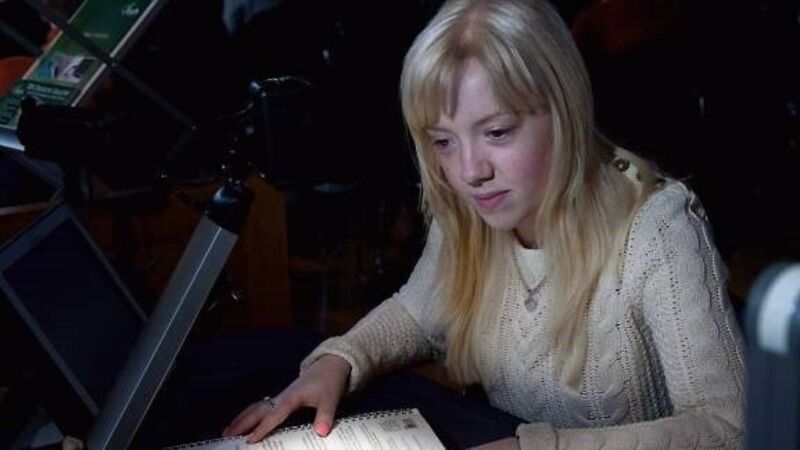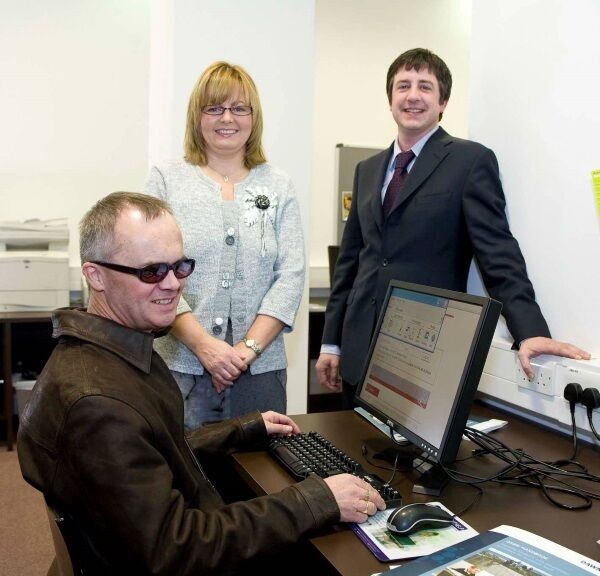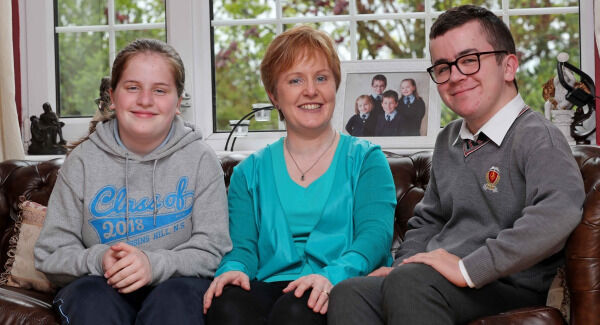Assistive Technology: Making learning possible for all

Assistive Technology helps students with varying difficulties further their education, says .
The sun is out and “the exams” are looming. Scientific calculators are being relocated, highlighter markers are working overtime, and ball point pens are experiencing a seasonal surge in popularity.
But for some students, preparing for the Leaving or Junior Cert demands more than just access to these traditional tools.
For students with learning difficulties or physical disabilities, pen and paper can serve to exclude not include.
However, many of these students are now being afforded the opportunity to access the curriculum in school and college with the support of Assistive Technology (AT), while some may also be granted permission to use this technology to complete their state exams.
Last year, 121,000 students sat the Junior and Leaving Certificate examinations. Of these, 17,661 candidates were granted accommodations for the exams.
Accommodations vary from the provision of reader or scribe to a Live Scribe Pen and, in some cases, voice recognition software.
A spokesperson for the State Examinations Commission said that figures for this year’s exams are not available until after the examinations but “by way of comparison, reasonable accommodations were granted to 16,764 candidates in 2016, and 16,194 in 2015.”
Sam Timbrell received a diagnosis of dyslexia in sixth year of secondary school.
“Being asked to read was my worst nightmare,” says Sam.
The 24-year-old UCC graduate felt he always struggled in school and was relieved when a private assessment confirmed he had dyslexia.
“It was like a weight was lifted off my shoulders.”
And, although Sam was given extra time accommodation during his Leaving Certificate examinations, it wasn’t until he attended the orientation day in UCC and was introduced to AT that barriers to his education really began to fall away.
“I didn’t know myself, it was the first time that I felt comfortable and confident in myself.”

Tucked neatly into the Boole library building of UCC lies the Assistive Technology Lab. The lab acts as a hub for the 1,400-plus students registered with the college’s disability services.
Here students can assess chrome books, laptops, scanners and even a “quiet area” for those with sensory needs.
Access to AT is not restricted to the lab. Every computer on campus has AT software installed on it to maximise accessibility.
“Access is everywhere — I could use any computer on campus”, says Sam.
Technology is not a new entrant to the college campus or school building, it has been a feature in lecture halls and classrooms throughout the country for many years.
But for some it’s not just an alternative option to pique interest, for some it is a necessity. A tool that enables them to access content that would otherwise be beyond reach.
Deirdre Madden, outreach officer for UCC’s Disability Services, spends much of her time championing the use of AT in education, and points out that having AT installed throughout the campus can benefit all students, not just those who need it.
“For some people it makes the impossible possible, for everybody else it is useful too,” says Madden.
“We learned with text book, pen and paper. We know that people were left out of the loop for a very long time. We are very fortunate that in 2018 we have so many more options available to us.”
Assistive Technology is any piece of equipment, device or software that helps to improve the functional capacity of people with disabilities.
The options available to those seeking AT are broad and varied, ranging from something as simple as a pencil grip or a smartphone to more complex items like voice recognition software.
The needs they cater for are equally as varied — from physical disabilities, learning difficulties, visual or auditory impairments, to autism or significant ongoing illness.
But the common denominator with all this technology is that of empowerment — it levels the playing field for those who previously struggled to access the curriculum.
Sam Timbrell may not have experienced the benefits of AT until he reached college but students who are fortunate enough to receive earlier assessments can begin using AT in their school years.

Grace Cussen describes what life was like for her children Brian, 17, and Aoife, 12, before they started using AT in school. “They were exhausted at the end of every day from the physicality of trying to keep up”.
Brian, who has a rare genetic disorder and was also diagnosed with dyspraxia and autism, started using AT in primary school.
He remembers what school was like prior to AT.
“A lot of the time just writing stuff down I’d have to work that extra bit harder and I have a genetic syndrome that made me tired. Using technology keeps me on a level playing field with everyone else.”
Along with using an iPad in school, Brian’s school has also installed a lift to assist with his travelling around the school. His mother describes how “this benefited the whole school”.
His sister Aoife was diagnosed with asperger’s and dyspraxia in 2015, and tells of how she “felt stupid” because she couldn’t write fast enough. Now with the use of an iPad, Aoife can take screenshots of board work during class.
“Using the iPad has made school life a lot easier — it places less stress on you,” Aoife explains.
Aoife is also awaiting the allocation of laptop speech recognition software to assist her with the output of her learning.
“For someone with dyspraxia, thinking and writing at the same time can be quite difficult,” explains Deirdre Madden.
A report published by the National Council for Special Education reinforces Aoife and Brian’s positive experience of using AT to access education.
A survey of students in the report using AT noted “the positive impact of AT on classroom participation and access to learning was rated very positively (86% and 78% respectively).
Some of the benefits highlighted by teachers in the same report were “improved interest in learning and classwork and improved interaction and participation with classwork and classmates.”

Teachers also stated that AT reduced pupil stress levels.
While the merits of incorporating AT into the education system for those who need it are acknowledged by all involved, there are a few glitches in the system that require attention.
Linda Hall, teacher in Coláiste na Toirbrithe in Bandon, believes there is a disconnect between the allocation of AT and using it in the state exams.
“Students go through a rigorous test by a professional to be granted use of Assistive Technology in school,” says Ms Hall. “I feel that if a student has been granted use of AT by the Special Educational Needs Officer (SENO), then that should automatically qualify them for Reasonable Accommodation in the Certification of Exams (RACE).”
Grace Cussen also finds the process frustrating and describes the timed test that Brian has had to complete for RACE as a ‘pet hate’.
Grace also stresses that the “complicated application systems” for accessing AT, along with accessing appropriate training for allocated AT, needs attention.
There is also a stigma associated with AT that can stop people from engaging with it.
Linda Doran, head of disability services and assistive technology officer in UCC, believes timing is the key to challenging the stigma that surrounds AT. “Get [students] at the right time”, says Doran.
She believes students that don’t receive their AT until secondary school or college are most susceptible to being restricted by stigma.
“There is a fear of being different or standing out. You’re fighting a losing battle”, states Doran. Some students are reluctant to register with the disability service.
“There is a stigma attached to the word disability. There is nothing to be ashamed of. I’d sooner challenge the stigma. The long-term goal of this is to maximise someone’s potential and independence,” states Madden, “Let’s get rid of the shame.”











